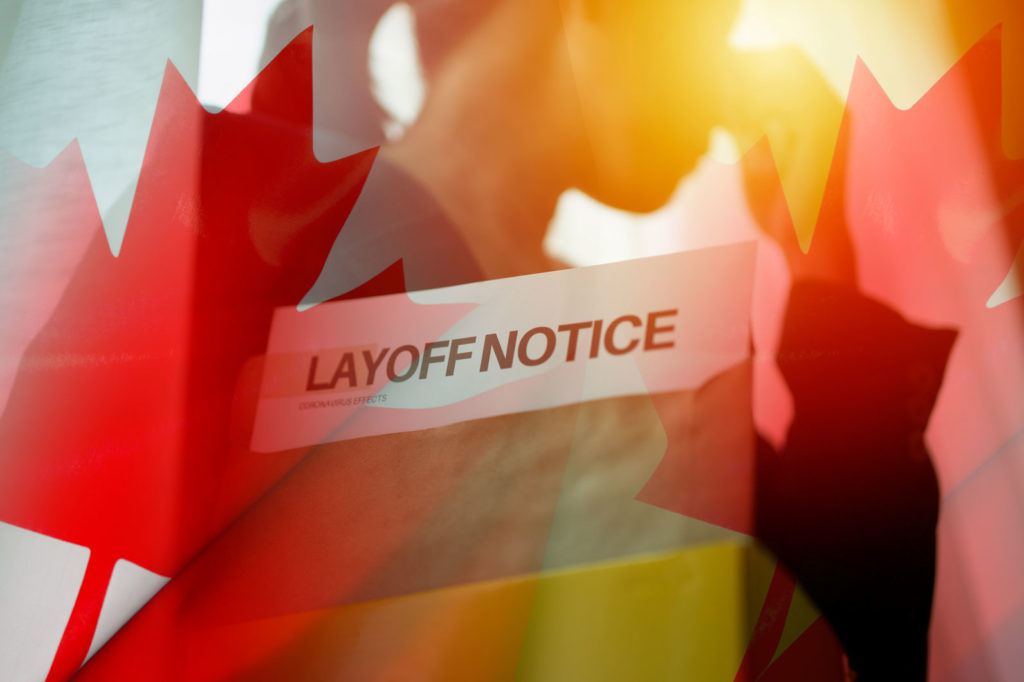
Feds Extend Recall Period for Temporary Layoffs
The Canadian government has extended the recall period for temporary layoffs for up to six months and targets federally regulated employers. The rules guiding the extension are set out in the Canada Labour Standards Regulations.
Workers who were temporarily laid off before March 31, 2020, have slightly different rules from those who laid off between March 31 and September 30, 2020According to the rules, the recall period of employees laid off before March 31, 2020, has been extended by six months or to Dec. 30, 2020. This paves the way for affected employers to recall the employees they laid off temporarily at the onset of the crisis long after the first recall period expires.
 Under the new rules, the recall period for employees laid off between March 31, 2020, and Sept. 30, 2020, is also extended for six months and comes to an end on Dec. 30, 2020. This rule does not apply for temporary layoffs with a written notice for a later recall date. Federally regulated employers who provided a written recall notice can stick to their recall dates.
Under the new rules, the recall period for employees laid off between March 31, 2020, and Sept. 30, 2020, is also extended for six months and comes to an end on Dec. 30, 2020. This rule does not apply for temporary layoffs with a written notice for a later recall date. Federally regulated employers who provided a written recall notice can stick to their recall dates.
By extending the recall period, the government seeks to protect the jobs of temporarily laid-off employees by providing more time for them to be recalled. According to Filomena Tassi, minister of labour, “many employers who had to temporarily lay off employees intend to bring them back to work.” But, they are not setting a clear recall timeline due to “uncertainty regarding exactly when that will be possible,” she added. The extension gives employers more time to recall their employees. The extension relieves some employers and layoffs who were increasingly getting worried as the first recall period was coming to an end.
It is important to note that an employee’s layoff time will continue to count towards their continuity of employment. If the employee’s employment is eventually terminated, their layoff time will be “factored into the calculations for termination pay and severance pay,” says the government. This means that employee’s right to eligible termination and their right to severance and vacation pay upon termination are not affected by the changes. But, employees should not expect to collect their severance and vacation pay as usual.
According to Nick Milanovic, an adjunct professor at Carleton University in Ottawa, “the new rules delay workers from collecting their severance and vacation pay from employers that laid them off.” Burdening employers in the current environment is a major concern for the federal government. “So the PM will make workers wait to be paid,” added Milanovic.
The changes do offer a blanket cover for all employees of federally regulated employers. For one, employees “covered by a collective agreement that contains recall rights” are not covered by these changes, said the government. Also, they do not cover employees who were terminated before the amendments come into force. The previous rules will apply to employees who are temporarily laid off after Sept. 30, 2020.
The extension of the recall period is one of several adaptation measures put in place by Prime Minister Justine Trudeau’s administration. The Canada Emergency Response Benefit (CERB) coverage was recently extended for eight weeks. Before the changes in the recall period, Ontario had already changed its rules, ensuring temporary layoffs due to the crisis are considered on leave.


 Our HR solutions experts can recommend the right mix of HR outsourced services to make your entry into Canada easier.
Our HR solutions experts can recommend the right mix of HR outsourced services to make your entry into Canada easier.  Pivotal Employment Management Services co-hires your workforce, simplifying entry of your business in Canada.
Pivotal Employment Management Services co-hires your workforce, simplifying entry of your business in Canada. 














